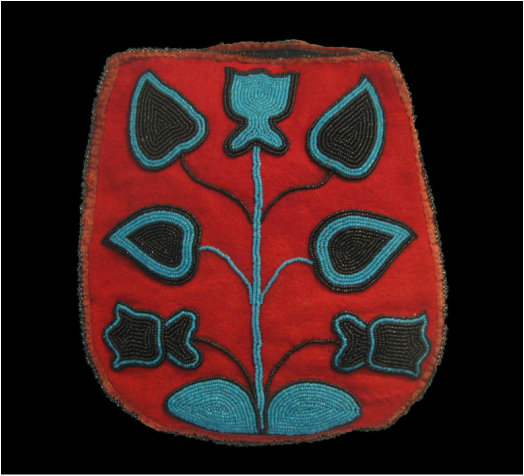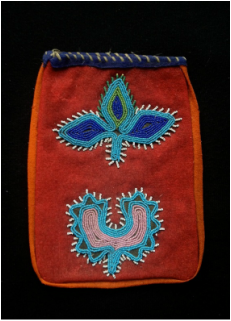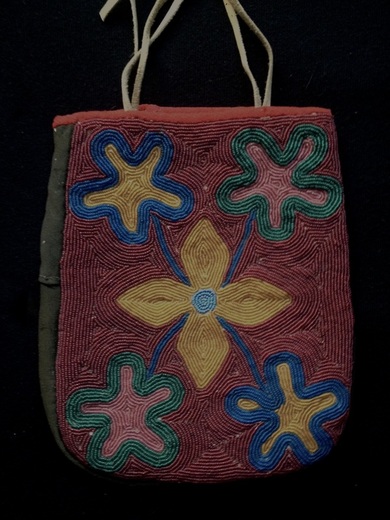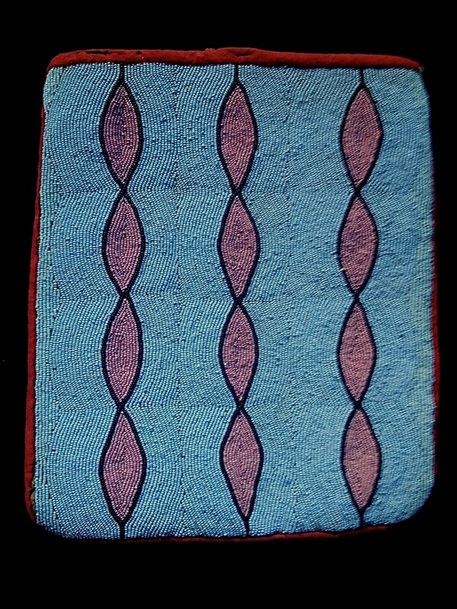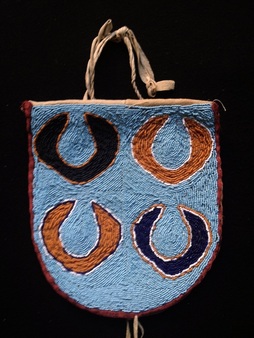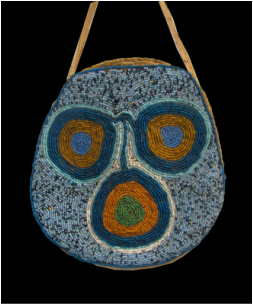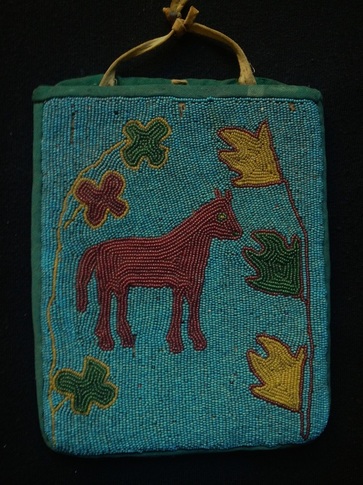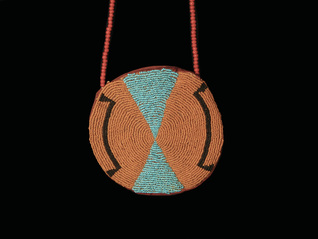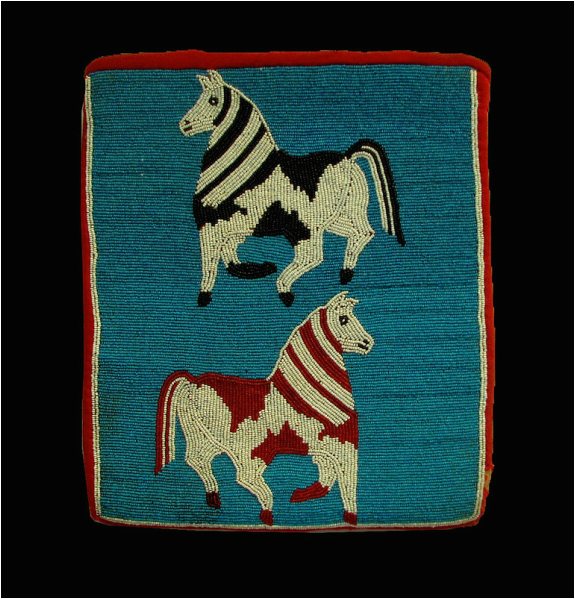Beaded Bags from Columbia River Plateau
The Evolution of An Art Form
|
Contour beading is a technique whereby the stitching begins at a center point and goes outward in a circular or elliptical fashion that was developed by the artists of the Columbia River Plateau after the midpoint of the 19th century. The technique parallels that used in some basketry and suggests that it grew out of that tradition.
This vibrant style is unique to this region which encompasses parts of Montana, Idaho, Oregon and Washington In the third quarter of the 19th century, Native women of the Columbia River Plateau began to make cloth bags with beaded front sections generally on red trade cloth. Initially, the bags were partially beaded against a trade cloth background, usually red (see #1 & #2). By the 1880’s, the bags had fully beaded backgrounds done contour style. They also became an important part of a woman’s public persona. In studio photographs from the era, Plateau woman invariably are holding either these bags or woven fiber bags which pre-date the use of cloth beaded bags. This style of beadwork was also used in other forms such as the belt pouch (#5) and the peace medal bag (#8) shown herein. Later on, at the turn of the century, the background of the bags were flat-stitched and the contour technique was limited to the design elements (see #7). The next development saw the contour technique limited to the outline of the figures and to indicate certain elements within those figures (see #9). |
1) This bag features the traditional foliate motif that Lois Dubin suggests (on page 191 in FLORAL BEAUTY which was published to accompany an exhibition at the Autry Museum in 2014) that this motif may have cosmological significance. This bag is published on p.193 of that book and dates to the 1870’s. 9” x 9.75”
|
|
2) This bag may pre-date the previous bag as the floral motif is not as well-developed and approaches abstraction in the lower element. The use of white beads emanating from the central design suggests a light source radiating from the center which reinforces the suggestion of a cosmological origin. Both of these elements are beaded on a green trade cloth which in turn is sewn onto the red. The white beads are directly sewn into the red. This raises the possibility that the original foliate beadwork, which includes the very smallest beads from the earliest era, has been recycled into this current example. This bag has the same red trade cloth as bag #1 and was also made in the 1870’s. In very good condition, it shows significant Native use. 6.5” x 8.75”
|
3) This fully beaded bag dates from the 1880’s and has contour technique throughout which creates a vibrancy and effervescent quality that shimmers with life. 7.5”x 9”
|
|
4) This 19th century example is contour beaded throughout in an abstract design that may have its origins in the leaves on a vine. The contour beading gives the entire piece an illusion of waves emanating from a central source. 9” x 10.75”
|
|
|
<- 7) This bag dates from the turn of the 20th century and has a flat stitch background while the floral elements and the horse figure are beaded in contour. The horse was a favorite motif at the time.
7” x 8.5” |
8) Peace medal bag with a pony beaded strap. Completely contour beaded, the design emanates from the center of the panel into a circular pattern that is composed of two elements, one of which has an abstract black form that suggests an equestrian association. The small size of the beads on the leather panel contrasted with the pony beads on the strap suggest a date no later than the 1870’s and possibly earlier. The entire bag is leather although edged with cloth. 5” diameter
|
|
9) Two prancing Appaloosa horses grace the face of this flat bag from the first part of 20th century. The artist achieves a sense of motion by varying her bead technique. She outlined the white sections of the horse against both the blue background and counterpoint to the horse body. Vestiges of the contour technique are used in the horse head and body that echo the earlier tradition. The result is a tour-de-force that achieves a new level of motion even as the tradition of the vibrant contour beading has evolved. 10.5” x 12”
|

